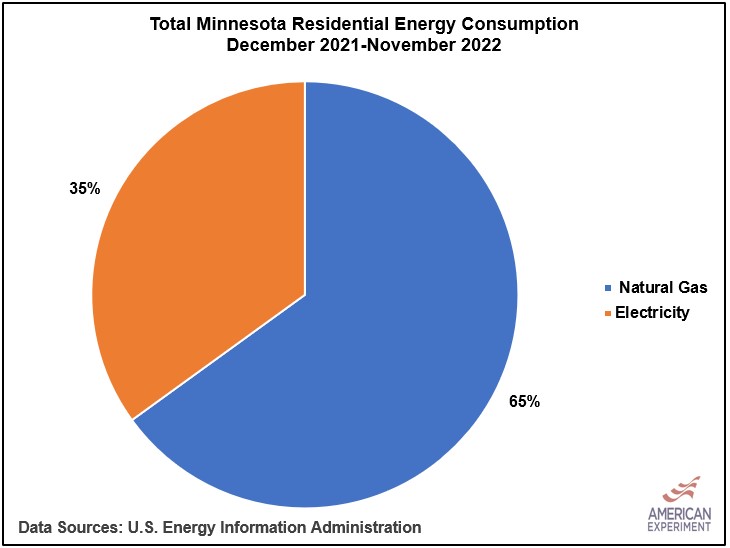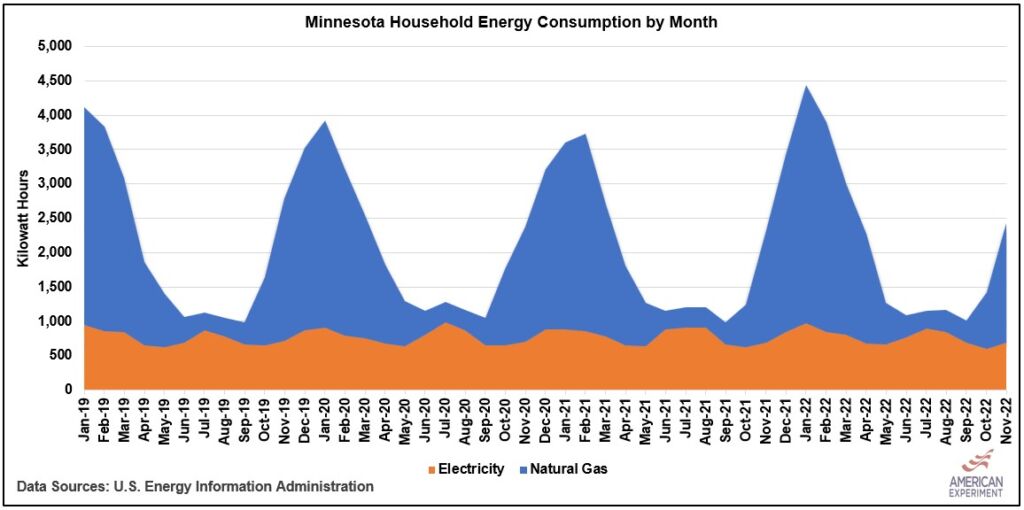The vast majority of energy used in Minnesota homes is natural gas
Did you know that the vast majority of energy used by Minnesota households is natural gas, primarily for home heating, use in water heaters, and of course, for gas stoves?
Data from the U.S. Energy Information Administration show 65 percent of residential energy use from December 2021 through November 2022 (the most recent 12-month period for which data are available) came from natural gas. In contrast, only 35 percent of household energy use came from electricity.

Unsurprisingly, natural gas consumption spikes in the winter months when Minnesotans turn their furnaces or boilers on.
The graph below shows the monthly electricity and natural gas used by residential customers in Minnesota. Natural gas data have been converted from million cubic feet to kilowatt hours to show an apples-to-apples with the energy used in the average Minnesota home.

As you can see, total household energy use surges in the winter from about 1,000-kilowatt hours (kWh) during summer months to more than 3,500 kWh in January 2020 and nearly 4,500 kWh in January 2022. This means total household energy use in Minnesota increases by 3.5 to 4.5 times in colder months.
This has important implications for policy because extreme environmental groups and progressive politicians want to replace natural gas for home heating, cooking, and water heating with electricity as part of their initiative to “electrify everything.”
However, Minnesota’s current electric grid is woefully inadequate to replace the volumes of natural gas used for home heating, and this will be especially true as reliable coal plants are shut down in the coming years, and Minnesota utilities build wind, solar, and battery storage to replace them.
Attempting to electrify home heating while simultaneously undermining the reliability of the electric grid will cause huge spikes in electricity demand during cold periods, but the power grid may not be able to keep up, resulting in the same rolling blackouts that hit several southern states over the Christmas of 2022, according to Bloomberg.
Unfortunately, Minnesota lawmakers seem keen to repeat the energy mistakes of other areas.